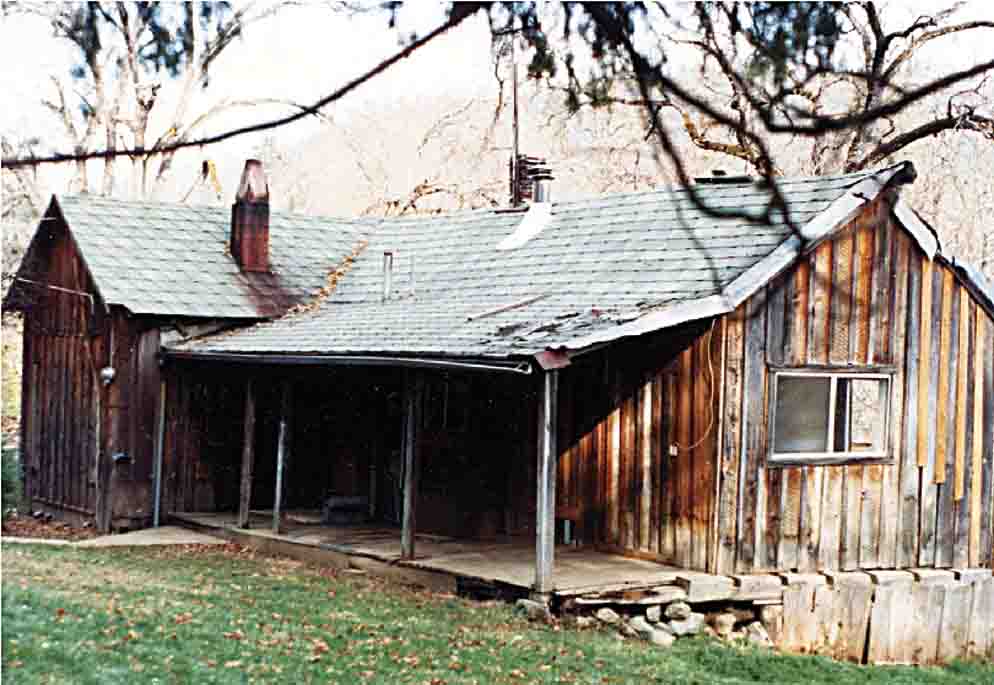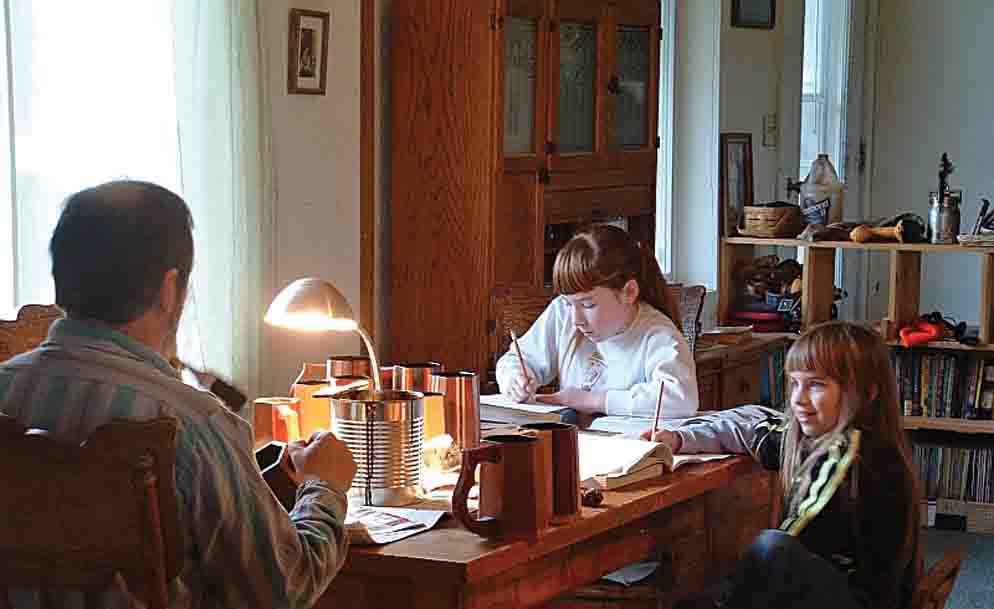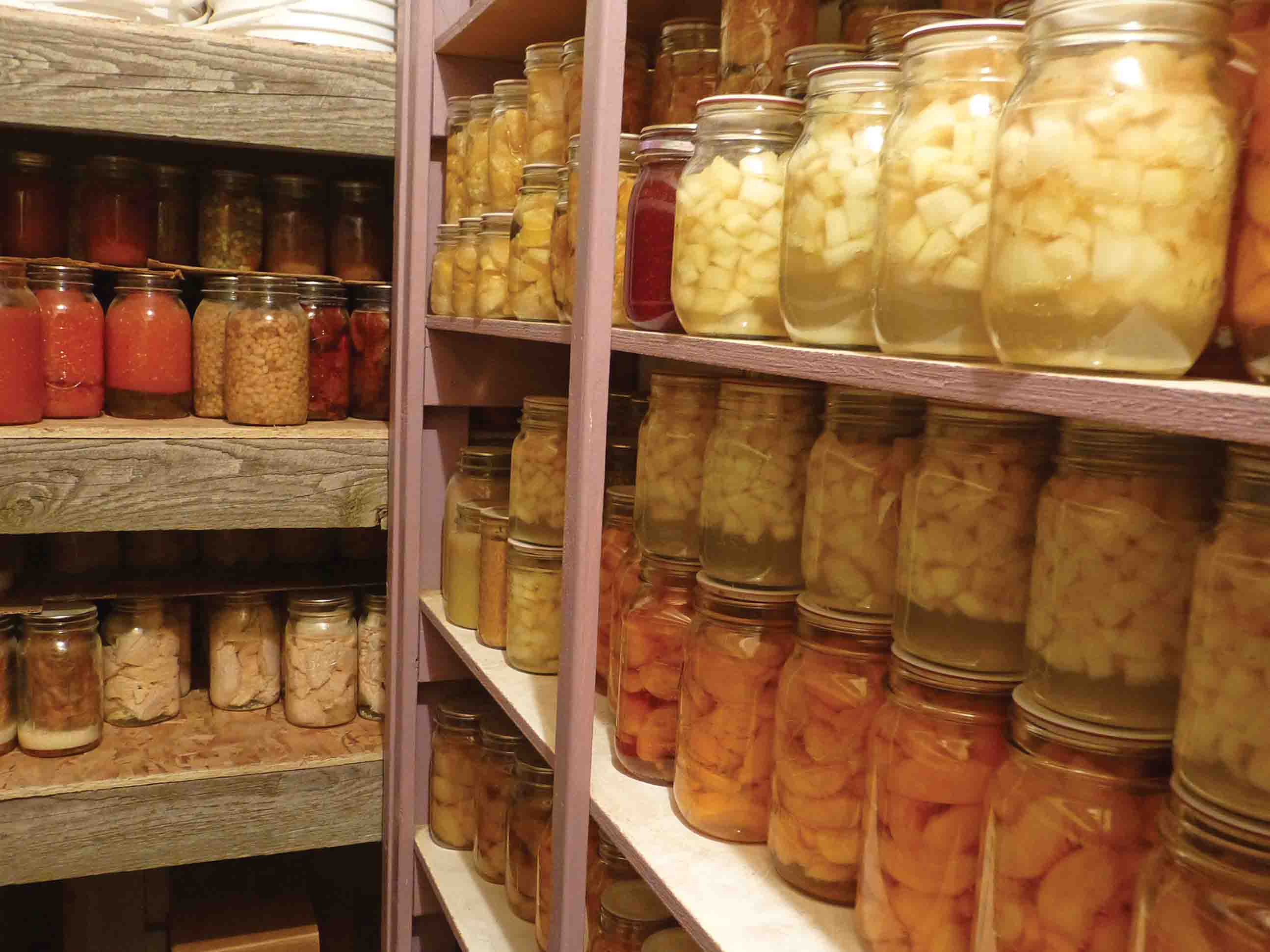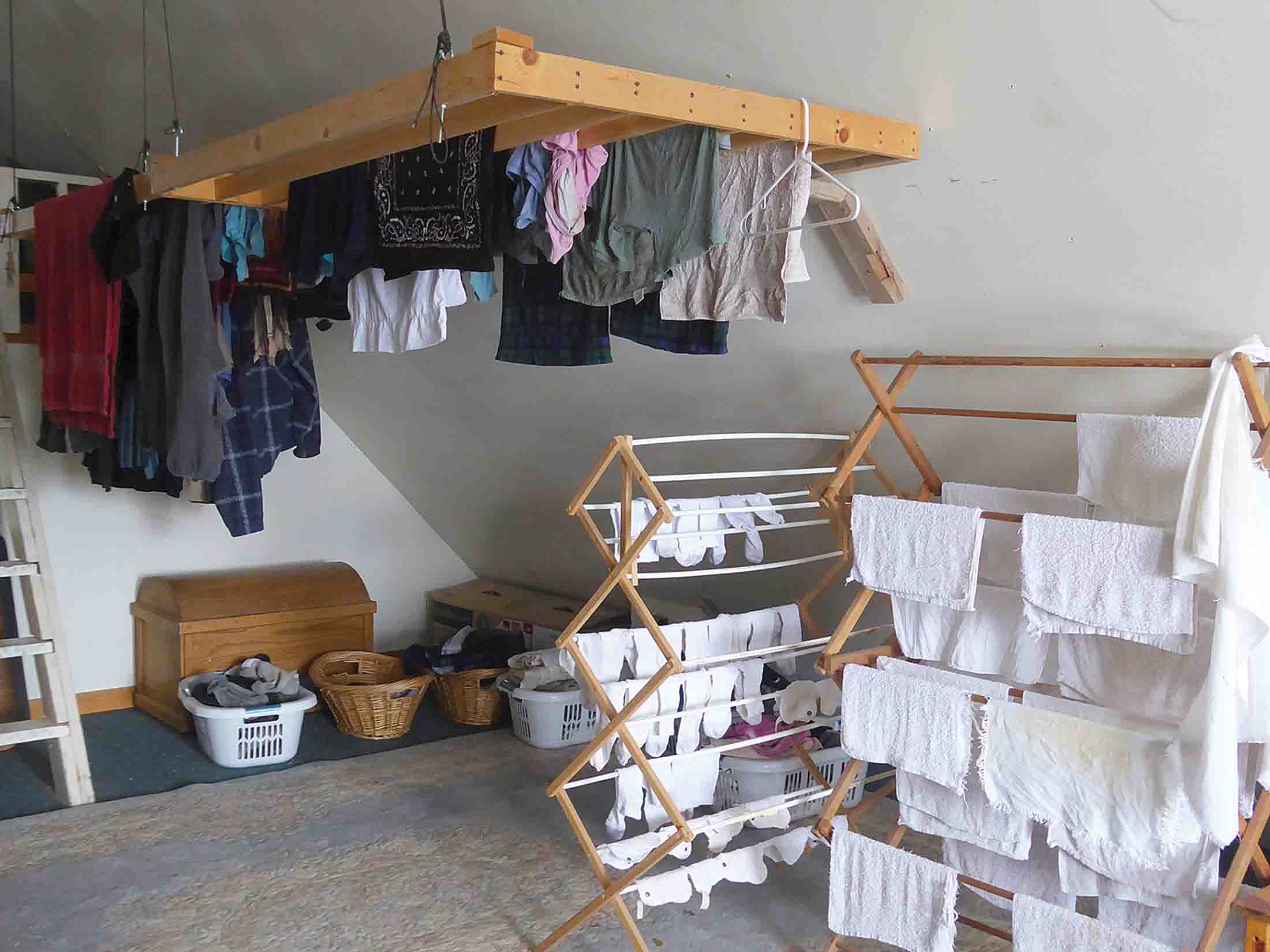By Patrice Lewis
Back in 1990, as newlyweds, my husband and I were normal. We lived in a rental house in Sacramento. We had two dogs. We commuted on the highway. We each worked nine-to-five jobs in respectable fields. We went to dinner every Friday night. We bought clothes in department stores. We had get-togethers with friends. We watched television. We walked our dogs around the block. We acted just like everybody else.
But this didn’t mean we liked being normal. Deep down, we wanted to be different. Early in our marriage, we decided on three primary goals: (1) We wanted to live on a homestead and raise our (future) children on a farm; (2) we wanted to achieve this by working from home; and (3) we didn’t want to live with regret — the regret of looking at each other on our 50th anniversary and saying, “If only.” If only we’d moved to the country. If only we’d raised our (future) children on a farm. If only we’d worked for ourselves.
For some fortunate people, a homestead is possible due to generous salaries, inherited money, or other factors. But the vast majority of us live paycheck to paycheck. Homesteading dreams are often put aside because they seem too expensive and unattainable.
But are they? One way to progress toward dreams and goals is to live as inexpensively as possible, and to apply any and all spare change toward achieving that goal. I call this “low-cost living” — which, quite simply, is one of the most powerful tools in anyone’s financial arsenal.
Dreams can often become reality if we choose to make them a priority, and I mean a priority. This means not only applying all spare income to the achievement of these goals, but also not doing something contrary that would jeopardize them.
And you’d be surprised how frequently people jeopardize their goals by spending money on unneeded stuff. If you look at our financial history, you won’t notice what we bought; you’ll notice what we didn’t buy. We didn’t buy new vehicles, big-screen TVs, electronic gadgets, or tickets to sporting events or concerts. We didn’t eat out, buy new clothes, or recreationally shop. We didn’t splurge on things when we felt deprived because we “deserved” it.
The hard truth is only you can fund your goals. No one is going to hand you a homestead on a silver platter. A rich relative won’t conveniently die and leave you a fortune. You can’t depend on winning the lottery to finance your rural lifestyle.
Our history
In 1992, two years into our marriage, we had the insight to recognize we were at a rare now-or-never juncture. We had no kids and no debt and even a small savings account. If we were going to make a leap into the unknown, we’d better do it now.
So (to the distress of our families and friends, who thought we were nuts) we chucked our well-paying respectable jobs, bought a run-down shack (euphemistically called a “fixer upper”) on four acres in southwest Oregon, and moved. We set out to turn it into a homestead. That, if you recall, was Goal One.
Unable to find jobs, we started a woodcraft business — a far more financially unstable proposition than we ever anticipated. But working from home was Goal Two, and with gritted teeth we set out to make it work. We could keep our homestead (Goal One) in one of two ways: Either we could earn more (outside jobs), or we could spend less. The former we tried not to do. The latter was easier. If we wanted to continue the lifestyle we’d chosen — living in the country and working from home — the only viable option was to reduce our expenses commensurate with the uncertain income of a woodcraft business. And so we did.

Our first home (in Oregon) in 1993
When our girls were born, we added the goal of raising them ourselves and never letting them see the inside of a daycare or public school.
Over the years, frugality became second nature, and it allowed us to continue achieving our goals. We homeschooled our girls through graduation and launched them into respectable careers. In 2003, we left our little Oregon house on four acres and moved to a larger home on 20 acres in Idaho. We embarked on a quest for food self-sufficiency. And through it all, we’ve managed to accomplish everything on a shoestring budget.
The purpose of a low-cost lifestyle is simple: To achieve goals. In our case, the goal was a home-focused life of homeschooling, homesteading, and a home business. Your goals may differ, but with rare exceptions a low-cost lifestyle can help you on your way.
Resist temptation
Whether or not we like to admit it, we tend to spend what we make, which is why most of us live paycheck to paycheck. Credit cards make it easy to splurge, lines of credit make it easy to give in to temptation, and a lot of us grew up with the American mentality that we “deserve” things that are not needs, but merely wants.
But unless you plan to win the lottery (in which case I’ll scold you for wasting money on lottery tickets), your goals can only be achieved by plugging the leaks in your spending.
Make no mistake, you have plenty of leaks. So do we, even after 25+ years of learning the art of frugality. In a land of abundance, it’s hard to miss the temptation to spend money everywhere we turn.

Our homestead (in Idaho) in 2004
The single, simple, irrefutable economic principle that eludes most people in practice (if not in theory) is this: You must spend less than you make. Living above your means is the number-one cause of financial woes in the world.
I’m not addressing unfortunate situations (medical bills or unemployment) that can devastate one’s personal finances. I’m working on the assumption you’re gainfully employed and not disabled. With these assumptions, I ask you to keep this simple principle — you must spend less than you make — in mind when you decide to reach for your goals.
Leggo my Ego
A low-cost lifestyle means breaking the shackles of something called “career.”
We’re indoctrinated from an early age that “career” is paramount. The problem with most “careers” is they might pay well and allow us to brag about how important we are, but there may come a point where the title and the paycheck don’t bring fulfillment. When this happens, it’s time to look at what does give a sense of fulfillment, and it seldom involves buying things.
But to reach this stage, let’s address two very common problems: Ego and envy.
It’s astounding how much money we spend feeding our ego by trying to impress others — either others we envy, or others we want to envy us. Clothing, jewelry, cars, homes, electronics, college degrees — all can be considered status symbols and an attempt to convince others how important and successful we are.

Our tankards — 25 years in business so far.
This. Must. Stop.
Ego and envy have no place in low-cost living. Un-associating ego with consumerism means undoing decades of early training that things equal happiness, and contentment comes from purchases. But with low-cost living, you must break away from traditional consumer norms.
When you drop the burden of trying to impress others, when you eliminate envy as a driving force, you can soar — free and unfettered — into modest possessions and genuine personal confidence.
Attitude is critical in this department. If you live a low-cost lifestyle and resent every minute of it because you feel deprived, you’ll never be happy. Forget trying to keep up with the Joneses (they’re probably up to their eyeballs in debt anyway). Instead, embrace frugality as a fun and challenging adventure. Enjoy it!
Big and small
A low-cost lifestyle consists of both big and small adjustments. It is critical to keep core expenses as low as possible.
Big-ticket adjustments consist of things like debt (student loans, car payments, credit cards), college tuition, mortgage payments, health care, and frivolous expenditures such as expensive vacations, boats, etc.
Small adjustments consist of ordinary expenses: food, clothing, entertainment, electronics, utilities, home improvements, gifts, and other day-to-day purchases.
Let’s look at a few of these big-ticket items first.
Debt. Holy cow, have we ever been in debt. We racked up the credit cards and student loans just after we moved to Oregon, when I was in grad school full time (student loans), when our income was very low and unpredictable (we often lived on credit cards), and when our babies were born (no health insurance; we paid the hospital out of pocket). Trust me, debt is no fun. It’s called a shackle for a reason.
It should be obvious, but low-cost living is a whole lot easier if you’re not shelling out hundreds or thousands of dollars each month paying off unsecured loans. Move heaven and earth to pay those creditors and become debt-free.
Automobiles. Do not — ever — buy a new car. Don’t lease one either. New cars literally lose half their value the second (the second!) you drive off the lot. Think I’m joking? Drive back into the dealership and tell the salesman you’ve changed your mind. He’ll happily refund you half your money.
Leasing is just as bad. You’ll spend hundreds of dollars a month to drive around a status symbol, and at the end of it you won’t even own the vehicle.
Get a mechanically savvy friend to go car shopping with you and find a cheap used vehicle. You’d be amazed how much mileage you can get out of a carefully researched $2000 machine. And please, pay cash for it. Financing it is just putting yourself in more debt.
Mortgage. Buying a house is probably the largest investment in most peoples’ lives. Homes are also among the biggest opportunities to show off to others how wealthy you want to appear. As one frugal person said, “Who in their right mind would spend their lifetime paying for a building they never get to spend time in because they are always working?”
If you’re planning on embarking on a low-cost lifestyle, then having an affordable mortgage (or no mortgage at all) is critical.
Home prices obviously vary from place to place, so it’s well worth shopping around. Some areas have such high housing costs (New York? San Francisco?) that you’re unlikely to find an affordable living space no matter how carefully you look, in which case it’s probably time to leave those places behind and look elsewhere.
There are two critical factors that can influence how much you spend on a house.
One, the ability to work from home means your job is portable and you’re not tied by an umbilical cord to an urban area. This means you can move further out in the country where property prices are cheaper. It’s well worth cultivating work-at-home opportunities, even if they pay less, since it means you can pay less on housing.
Two, homeschooling your children means you’re relieved of the burden of finding a “good school district.” In the book “The Two Income Trap,” the authors describe how housing costs skyrocket in areas with good school districts. If you don’t need to consider the quality of public schools when factoring your mortgage costs, you can choose an area with bad schools but good prices. (Besides, homeschooling means your children will get a better education tailored to your specifications.)
It took us three years of careful searching to find our current home and property. We knew we couldn’t overextend ourselves financially and needed to find a place we could afford on a woodcrafter’s income. Because we were free to move anywhere without the consideration of jobs or school districts, we found a fixer-upper on 20 acres far away from the city in a lousy school district for a very affordable price.

Working at home and home schooling
Health insurance. This is probably one of the biggest hurdles to low-cost living. In the early days of our woodcraft business, we simply couldn’t afford health insurance and did without. When major medical issues arose (the births of both our daughters; the time my husband accidentally amputated part of his thumb on the band saw), we made arrangements with the hospital to pay the bills little by little on a monthly basis. It took a long time, but we paid back every penny. Hospitals are actually very flexible if you make a good-faith effort to pay them on a monthly basis, especially if you can make arrangements in advance (i.e. the birth of a child).
The issue of health insurance is a very personal matter. Only you can determine what level of coverage makes you comfortable. If you have a personal or family history of health problems, more complete coverage is desirable. If you are healthy and in the prime of life, you might be able to risk lower coverage.
Thankfully, my husband and I are in excellent health for our ages. Currently my husband has VA (Veteran’s Administration) coverage, since he is a Navy veteran. I am a member of Christian Healthcare Ministries, a medical sharing program which costs about $85/month for medium-level coverage. For those in reasonably good health, medical sharing programs are probably the most affordable health coverage available.
As for medical bills, I’m going to do something very unusual in a magazine article: send you to an online link you should read. Entitled “How to negotiate directly with physicians and hospitals,” this is a detailed and in-depth guide to reducing medical bills:
https://www.zerohedge.com/news/2018-03-16/how-negotiate-directly-physicians-and-hospitals
Big-Ticket Frivolous Expenses. Many people indulge in pricey and frivolous expenses. They buy boats or RVs and spend years paying them off. They travel to exotic destinations. They send their children to expensive summer camps.
Clearly these expenses have no place in a low-cost lifestyle. But don’t look at their absence as deprivation; instead, consider low-cost alternatives to have fun. Go camping. Rent a boat for a day (rather than buying). Rent a friend’s RV (most RVs sit unused 90 percent of the time). Spend time together as a family rather than shunting the kids to summer camp.
A lot of people enjoy traveling, and I don’t blame them. If that’s your passion, a low-cost lifestyle allows you more freedom (and money) to travel rather than being shackled to a desk job you hate because you’re so deeply in debt.
College. For many people, a college education for their children is a no-brainer. Of course little Johnny or Janey will be going to college. An advanced degree is necessary for success, for higher paychecks throughout life, and greater financial security during retirement.
But is it? Is college really necessary? Consider these two scenarios:
John Smith goes to college and studies History with a minor in English. During his four years in school, he acquires $30,000 in student loan debt. Upon graduation, he is dismayed to find the only employers hiring History/English majors are Starbucks or Motel 6, so he decides to pursue a graduate degree with an eye toward teaching at a college level. He spends another three years in a Ph.D program and emerges by the age of 25 with a doctorate degree and another $30,000 in debt. He is lucky and lands a position as a professor at a college. Now he can start building his financial portfolio, right after he pays off the $60,000 he spent on his education.
Charles Jones decided to skip college and become a mechanic. At 18, he apprenticed himself and began learning about engines and machinery. By age 25, he owns his own garage with a waiting list for his services. By age 40, just as John Smith finally paid off his student loans, Charles is able to pay off his house, invest heavily for his retirement, and cut back to a three-day workweek.
Who has done better in life? Sure, John Smith can brag he has a Ph.D, but it’s Charles Jones who had the smarts to know the ticket to success. (Incidentally, Charles Jones is based on someone we know. We didn’t make him up.)
Both my husband and I are highly educated — we both have master’s degrees in the sciences — but both of us have become incredibly soured on higher education in the last few years. It has become less about educating young people into productive fields of work and more about “the college experience.”
The bottom line — and here’s the clincher — is you have to know whether the college degree you earn will be worth the expense in the marketplace after you graduate.
For that reason and more, I urge parents to seriously think before encouraging their children to attend college. Unless your teen shows a strong aptitude toward a STEM field (Science, Technology, Engineering, Medicine), many degrees are a waste of time and money.
Besides, it’s becoming painfully apparent how many high-paying trade jobs sit empty while students line up to attend college. For decades, students were told college was the only sensible path for young adults. But according to a recent NPR article, “While a shortage of workers is pushing wages higher in the skilled trades, the financial return from a bachelor’s degree is softening, even as the price — and the average debt into which it plunges students — keeps going up. But high school graduates have been so effectively encouraged to get a bachelor’s that high-paid jobs requiring shorter and less expensive training are going unfilled. This affects those students and also poses a real threat to the economy.” [Emphasis added.]
Skilled tradespeople are in desperately short supply, and wages have risen accordingly. There has never been a better time to become an ironworker, plumber, or carpenter. Often young people entering skilled trades are both working and attending trade school at the same time they’re getting benefits and a pension — at an age when college students are miring themselves deeper in debt that will impact them for decades to come.
Go back and re-read the section on putting aside one’s ego. Are you sending your kids to a pricey institution so you can brag about it? If so, it’s time to reevaluate your priorities — as well as the lessons you’re teaching your kids.
If you do feel compelled to send your children to college, consider starting them at a local community college to get their basic subjects out of the way before transferring to a four-year school. Community colleges cost a fraction of what four-year colleges cost. If they have a reputation for lower quality, it’s because more “prestigious” institutions have cultivated that myth. In fact, community colleges are often taught by highly dedicated instructors whose focus is on their students, not their research.
In our family, our daughters knew we, their parents, had been priced out of the college market years ago, so we encouraged them to follow alternate paths. Here’s what they did.
Our older daughter (currently 22) loves children. Rather than spending four years studying Child Development or Child Psychology or some similar subject, we sent her to a nanny school (English Nanny & Governess School, Chagrin Falls, Ohio) where she took a three-month program and emerged as a Certified Professional Nanny. She has been working for a professional family ever since, caring for four boys. At the same age many students are graduating from college with tens of thousands of dollars in student loan debt, she has an enormous (enormous!) savings account, stellar credentials, and a huge demand for her services. She earns well in excess of what teachers make, including those with decades of experience. Wealthy professionals do not stint when it comes to paying a high-quality nanny.
Our younger daughter (currently 20) decided to join the Navy because she wanted to see the world. She aced her ASVAB scores (95 percent) and accepted a position in Advanced Electronics/Computer Field. She is currently in training school before hitting the fleet, and loving it. Like her sister, she has the discipline to save her money instead of blowing it on frivolous things. If she chooses to leave the Navy at the end of her enlistment, she will leave as a journeyman electrician and will have no trouble finding work — particularly as a female veteran in an in-demand field.
We are bursting-our-buttons proud of our daughters and the choices they’ve made. Both girls have a legacy of frugality and discipline; and rather than entering their adult years burdened with debt, they have healthy savings accounts and high-demand skills.

Home canning — another money saver
Small expenses
When finances seem hopeless and it appears one’s dreams will never be possible, it’s worth considering how much we spend on small things. Paychecks aren’t just eaten up by big-ticket expenses such as mortgage payments or unsecured debt. Paychecks can also “die by a thousand cuts.”
At the heart of frugality is the knowledge that trimming small bits of spending can yield tremendous results over time. Even now, decades after embarking on a frugal lifestyle, my husband and I constantly hone and tweak and examine our spending. What can be cut? What won’t we miss?
An important part of reducing or eliminating small expenses is to write down everything — and I mean everything — on which you spend money for a period of two to three months (or longer). Everything from your daily latté to that pack of gum needs to be recorded. Only then will you know where your money is going, and what you can do to cut costs. After all, you can’t plug the leaks until you know where the leaks are.
Here are a few ways we save money.

Being “handy” is helpful — Don built this hanging-clothes drying rack, and we rarely use our propane clothes dryer anymore.
Fashion/makeup/hair. This triumvirate of classic women’s weaknesses is something to which I have cultivated an absolute immunity. When I was younger, I worked as a field biologist, which required being a low-maintenance woman. I keep my hair long so it’s easily put up in a workday bun and I never have to worry about haircuts. I don’t wear makeup except on rare special occasions. As for fashion, I’m thrilled to live on a farm so I never have to think about silly clothes.
But for those women who need to keep up professional appearances, there are alternatives. Thrift-store clothing has a reputation for dowdiness, but that’s only because the fashion industry would love for us to think so. In fact, second-hand clothing is often high quality — after all, it’s passed the test of time — and available for pennies on the dollar.
Women who want to save money on hair costs would do best to cultivate low-maintenance styles that require little care. If you simply must have your hair professionally styled, get a little creative. Offer to barter with your stylist — perhaps you can pet-sit, or exchange fresh eggs or vegetables, or other goods or services she may want. Or try beauty schools, which often offer discounted rates while their students learn the ropes.
As for fingernails — sorry, you’re on your own there. I happen to think fancy fingernails are dumb. But hey, I live on a farm. Milking and manicures are incompatible.

Frugal living allowed us to live in the country away from many of the downsides of city life.
Vices. Smoking, drinking, drugs, gambling, compulsive shopping … clearly these vices are costly, unhealthy, and antithetical to low-cost living. Get help if you need it — the cost of a cure is cheaper in the long run than the cost of the vice.
Electricity. Americans are, I believe, unhealthily dependent on electrical devices. Beyond that, we’re shamefully prone to wasting electricity — letting a television blast into an empty room is my particular peeve — and therefore some people face monthly power bills creeping up into the hundreds of dollars.
Besides the usual “Turn off the lights when you leave the room!” mantra you mom used to tell you (and she was right), we switched to LEDs in nearly every socket and couldn’t be more pleased. LEDs used to give off a sickly bluish glow which I hated, but the products have improved immeasurably over the last few years and I’ve happily replaced every bulb. Our power bill has reflected this change.
We heat with wood (which also keeps our power bill low), but if you heat with electricity, consider installing a programmable thermostat to regulate your home’s heating and cooling during the night or at times you’re not home.
Electrical devices that are plugged in but not in use can still draw power (called a “phantom charge”), so unplug things you don’t use frequently, or plug them into a power strip for easy on-off.
Hot water is a huge energy draw. When we moved into our current home 15 years ago, we were surprised to find it had a hot-water-on-demand system heated by propane. Having never experienced this before, we were tempted to dismantle it and install a “normal” hot water tank. However I’ve become a huge convert. Imagine — you only heat water when you need it! What a concept!
If your home can be converted to this system, it may well be worth considering. Otherwise, be aware your hot water heater is responsible for about 14 percent (!!) of your electricity usage. At the very least, insulate your tank and pipes and lower the temperature to 125-130° F.
Clothes Dryer. Ah, another major energy sucker. Years ago when we lived in Oregon, my husband installed a clothes line and our power bill dropped in half. Here in Idaho, we have a propane dryer. At first I used it only in winter and hung clothes in the summer. After the clothesline broke (from overuse), my husband installed a hanging clothes rack from the upstairs ceiling and now I hang clothes year round (we also use a couple of freestanding clothes racks). We seldom use the dryer at all.
I don’t care how “energy-star efficient” a clothes dryer is, it still sucks up way too much power. Hanging clothes on racks only takes a few minutes, it’s kinda fun, and it will cut your power bill way, way, way down.
Food. One time I went to a potluck meeting for a writer’s group. Most of us brought homemade dishes, but one woman was conspicuous because she brought some delicious deli food. “I’m not on speaking terms with my kitchen,” she quipped.
I don’t especially like cooking, so I understand this woman’s viewpoint. However, that’s no excuse to buy expensive premade food when there are perfectly good appliances at my disposal.
Most Americans spend an absurd amount of money on premade meals, notably restaurant meals, fast food, deli food, or boxed food. This has no place in a low-cost lifestyle! Regardless of how hostile the kitchen might seem, it’s time to become reacquainted with cooking.
There are tricks for making easy from-scratch meals, even if you work full-time outside the home. A slow cooker is a wonder; throw in the ingredients in the morning, turn it on low, and you have a hot meal in the evening. A bread machine (if you actually use it) can save a huge amount of money. I used a bread machine for 22 years before it finally broke; I found an identical model at a thrift store and am now using that. My husband is a sandwich guy, so I make at least three loaves a week. I estimate I’ve made 3700+ loaves of homemade bread thanks to this mechanical miracle.
There are many tricks to keeping food bills low. Eat lower on the food chain. Eat your leftovers (bring last night’s dinner to work and save yourself the cost of buying lunch). It’s easy to make your own “convenience foods” by doubling your efforts whenever you make dinner, and freezing the leftovers for future meals (the book “Once a Month Cooking” is an excellent resource). Buy your staples (flour, beans, whatever) in bulk — try a restaurant supply store. Drink tap water instead of soda. Make out your meal plans in advance and then shop for appropriate ingredients, rather than trying to decide what to make for dinner while driving home from work. Eat seasonal foods, they’re cheaper. And of course, nix the junk food.
“But what about restaurant meals?” you cry in dismay. Sorry, these should be rare treats, not weekly indulgences. My husband and I eat out approximately twice a year. In fact, when our Navy daughter (who was just out of boot camp) gave us a gift card to a popular restaurant as a present last Christmas — and then apologized profusely for its impersonal nature — we assured her we were thrilled since we would never have spent the money for a nice restaurant meal otherwise. (The gift card is still clipped to our refrigerator, waiting for a special occasion to use it.)

Frugal living allowed us to raise and educate our kids ourselves.
Personal electronics. So many people get sucked into the wonderful world of personal electronics, but if you’re trying to forge a low-cost lifestyle, it’s worth asking whether they are worth the cost and continued expense.
It’s very easy to convince ourselves we “need” whatever the latest device is, and then of course we “need” every upgrade as it comes out. But folks, no one — and I mean no one — had personal electronics 15 years ago, and yet we all managed to conduct our day-to-day affairs with reasonable efficiency. Additionally — as the latest scandalous data-collection stories attest — they can be dangerous. Are these modern marvels simplifying your life? If not, jettison them.
In our house (remember, our kids are gone), my husband and I each have a computer, and between us we have one “dumb” phone for roadside emergencies. That’s it. As a result, we are able to keep our Internet costs minimal, not to mention eliminating upfront costs of fancy personal devices.
Entertainment. As with anything else on this list, I recommend cultivating low-cost entertainment. Should you spend mega-bucks on that fancy vacation, or borrow a friend’s RV (or tent) and go camping? Should you go see the latest movie in the theaters, along with popcorn and drinks, or should you stay home and rent a DVD? Should you renew your gym membership, or should you purchase a weight set from a thrift store or go jogging in the park? Should you go to a nice restaurant for dinner, or get together with the neighbors for a potluck? Should you buy that new book, or get it from the library? Which options contribute to the low-cost lifestyle you want to cultivate?
Develop hobbies and pastimes which don’t cost money. Surround yourself with friends who prefer to chat over tea than wander the mall. Enjoy potlucks instead of restaurant meals.
If your goal is a homestead, it will help immensely if you’re not addicted to high-cost entertainment (which often isn’t available in rural areas anyway). Remember, don’t do things contrary to your goals — and that includes spending money on ephemeral experiences that don’t contribute to your plans.
Recreational shopping. Obviously this is a no-no for a low-cost lifestyle. See “Entertainment” above, and stay out of the malls.
Remember, every sale in the world won’t save you as much money as simply not buying the item in the first place. Ben Franklin said it best: A penny saved is a penny earned.
Disposables. The average American spends $5,000 per year on things they throw away after a single use. That is a staggering price for mere convenience — costly not just to our wallets, but to the landfill. Sometimes reusable or washable versions of common disposable items cost a bit more upfront, but amortized over many years of service, the price is negligible. You could spend $1 for a box of Kleenex, or you could spend $1 on a bandana you’ll use for years.
The cost of convenience should not be a factor in your new lost-cost lifestyle. Ditch the disposables and rediscover the pleasures of washable, reusable items.
Do It Yourself. In a low-cost lifestyle, it’s necessary to have practical skills. When necessary, my husband can turn his hand to plumbing, wiring, repairs, construction, etc. He also has the tools to do the necessary jobs. I’ve cultivated necessary domestic skills such as canning, gardening, scratch cooking, baking, etc. (the notable excepting being sewing, which I loathe).
Find balance
In the field of behavioral economics, there’s a theory called “loss aversion” which suggests that once we get used to a certain level of luxury in our lives, we find it almost impossible to give up, and doing so feels like deprivation.
There are ways to keep little sparks of luxury in a low-cost lifestyle; they just have to be frugal versions. I enjoy a glass of wine in the evening; but rather than indulging in a $15 bottle of vino which gives three glasses, I buy boxed wine that costs $15 and lasts a month or more. Yes, I could give up the wine; but because I chose not to “deprive” myself of my evening glass, I don’t feel resentful about our low-cost lifestyle. In fact, that evening glass has become something of a luxurious ritual that makes me feel wealthy and privileged … a lot of benefit from a cheap box of wine.
For whatever luxury you enjoy and would feel deprived without, find a frugal workaround and give yourself permission to enjoy the results.
The goal in frugality is balance. It does no good to cut expenses to the bone if you’re sullen and resentful the whole way. Instead, find what luxuries you don’t want to cut, and find frugal alternatives.
Why be normal?
Because of our choice to live a low-cost lifestyle, we were able to achieve our goals of a homestead, a home business, family-centered life with our children, and no regrets. Frugality is not deprivation or a penance; it’s deliverance. It gave us the luxury of choice: the choice to leave behind a suburban existence which held no appeal and to live our dream in the country.
We could easily have stayed in Sacramento, pursued our careers, and climbed the ladder. If we had never strayed from the “normal” path of success, where would we be now, 28 years later? We’d be living in a house in the suburbs and commuting to work. Our kids would have gone to public schools. We would be financially well-off. We’d be … normal.
Instead, we chose an alternate path and couldn’t be happier. A low-cost lifestyle isn’t what you’re giving up; it’s what you’re gaining. My husband and I have gained independence, contentment, beautiful surroundings, well-adjusted and happy adult children, and non-monetary riches beyond belief.
Mark Twain wrote, “Twenty years from now, you will be more disappointed by the things that you didn’t do than by the ones you did do. … Sail away from the safe harbor. Catch the trade winds in your sails. Explore. Dream. Discover.”
Don’t ever be ashamed of a low-cost lifestyle. Frugality and thrift have allowed endless people to escape circumstances they didn’t like and pursue the changes they wanted. The families of two of my sisters-in-law arrived in this country with a suitcase apiece and the clothes on their backs. Within 20 years they were home owners, business owners, and had college-educated children … all because they spent less than they made and spent as little as possible on the necessities. They achieved their dreams when coming to America through low-cost living.
If they can do it, you can too.


As the shame-faced bearer of an absolutely useless fine arts degree, I can’t agree with you more heartily on seeing college for what it is: a scam. I learned more in the year that I spent catering after college (whaddaya know, no one wanted to hire an art teacher) than I did in five years of propaganda-laced mind-manipulation masquerading as education. Wish there had been more people who held your perspective in my life before I wasted my time! But, it did get me eventually into homesteading (I got fed up with “normal life” as well), so I suppose it all worked out in the end.
it’s interesting reading your article. I am in the middle of reading a book on much the same idea entitled “Surviving Off Off-grid Decolonizing the industrial mind. It describes how we are all trained to be good little consumers who spend our lives working for more money so we can buy more stuff we don’t need.
Hi, my names Tim me and my wife really admire what you and your husband are doing!!! Good for you .Me and my wife Lynn are just about in the middle ways of taking care of our self. The natural way. But believe me we got a lot still to learn yet. If you have any tips on canning where all ears what do you can? BoforecI bore you completely to death with my rambling on! One question what is the timblars ? I’m really curious!.. Sinc.Tim @Lynn. Whitehead Ontario Canada